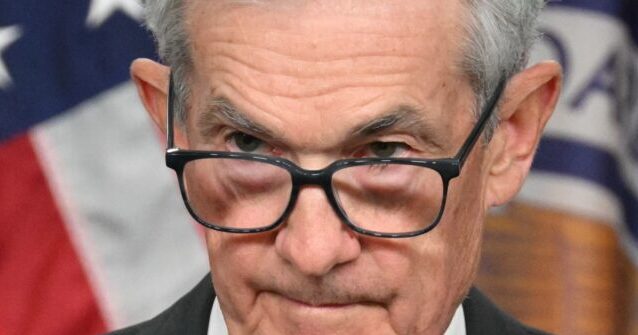We support our Publishers and Content Creators. You can view this story on their website by CLICKING HERE.

The Federal Reserve moved to cut interest rates by a half percentage point—the first reduction since the central bank cut rates to near zero when the pandemic struck in 2020—in a vote of confidence that inflation will continue to moderate and an attempt to fend off a further increase in unemployment.
“Recent indicators suggest that economic activity has continued to expand at a solid pace. Job gains have slowed, and the unemployment rate has moved up but remains low. Inflation has made further progress toward the Committee’s 2 percent objective but remains somewhat elevated,” the Fed said in a statement.
The Fed’s benchmark rate will now be a range of 4.75 to 5 percent, where it last was in April of 2023.
Senator Elizabeth Warren (D-MA) and other Democrat lawmakers had called on Powell to cut rates more aggressively, urging the Fed in a letter to reduce its benchmark federal funds rate by three-quarters of a percentage point.
Powell said that the cut on Wednesday was the beginning of a process to move the Fed away from a restrictive monetary policy but added that Fed policy is “not on any preset course.” Powell argued that the 50 basis point cut on Wednesday was not a guarantee that future cuts would be that at large.
“I don’t think anyone should look at this and say, ‘This is the new pace,’” Powell said.
The decision to lower rates reflects increased confidence on the part of Fed officials that inflation is moving sustainably toward their two percent target.
Fed officials have also said that they now view the risks to their mandate to maintain full employment to be greater than the risks of a resurgence of inflation. Earlier this summer, the unemployment rate tripped the Sahm Rule threshold by rising more than a half a percentage point above its recent low, typically a signal that the economy is already in a recession. Claudia Sahm, whose research is behind the rule, has said she does not think the economy is currently in a recession but worries that restrictive monetary policy could unnecessarily increase unemployment even more.
Evidence for a weakening labor market, however, has been scarce. Hiring in June and July disappointed and revisions showed it was weaker than expected. But, at least in the government’s preliminary estimate, payroll growth rebounded in August. Layoffs have been low, with jobless claims last week around where they were a year ago.
Both retail spending and industrial production came in better than expected in August, according to reports released this week.
The last time the Fed began cutting rates prior to the pandemic, in July 2019, the benchmark rate was a range of two percent to 2.25 percent. The Fed began cutting then as a pre-emptive strike to stave off what it feared would be a looming global slowdown and ameliorate any damage to the economy from trade tensions.
The Fed also released a new set of economic projections of Fed officials. The median forecast for the fed funds rate at the end of this year fell from 5.1 percent to 4.4 percent. Next year’s projection was brought down to 3.4 percent from 4.1 percent. Officials also see an improved picture for inflation, projecting the personal consumption expenditures price index to be up 2.3 percent for this year instead of 2.6 percent and 2.1 percent next year instead of 2.3 percent.
The longer-run projection for the fed funds rate rose to 2.9 percent, four-tenths of a point above the 2.5 percent the Fed had consistently projected from 2019 through the end of last year. In the June projections, officials had indicated an expectation for a longer run rate of 2.8 percent.
On the other hand, unemployment is now seen as going higher. When the Fed last released projections in June, officials forecast a four percent rate of unemployment at year-end. The new projections have unemployment rising to 4.4 percent. Next year, unemployment is seen as staying at 4.4 percent, up from the earlier estimate of 4.2 percent. Similarly, the median projection for economic growth ticked down to two percent from 2.1 percent this year.
Eleven officials voted for the rate cut. One Fed governor, Michelle Bowman, dissented, preferring a quarter-point cut.

 Conservative
Conservative  Search
Search Trending
Trending Current News
Current News 







